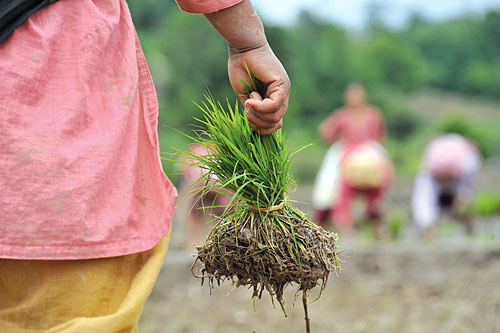 |
Next week, the country marks rice-planting day. Nepal used to be a net exporter of rice, today it imports staple grain. The ongoing census will show us how fast our population is growing, and whether or not our farm productivity can keep pace.
Despite a banking crisis, a power crisis, a political stalemate, and stagnant investment Nepal's economy is expected to grow by 5 per cent this year. What saved us was the most-neglected part of the economy: agriculture. Nearly half the paddy fields are rain-fed, and last year's favourable monsoon with timely winter rains meant that rice production grew by 11 percent.
With sustained investment in irrigation and technology there is no reason why Nepal can't feed itself. Travelling across Nepal this week, it was clear that for a majority of Nepalis the priority was neither the constitution nor the politics in faraway Kathmandu. It was whether the rains will come in time, whether fertiliser will be affordable and whether farmers will get a fair price for their produce.
A new way of rice farming called SRI (System of Rice Intensification) is bringing new hope to thousands of farmers in 35 districts across Nepal. With minor adjustments to their planting method, farmers can grow double the rice with less seed, less water and less fertiliser.
Not all solutions for Nepal are political. The farmers seem to have got the point.
Rubeena Mahato in Kailali
Nepal's hunger solution, RUBEENA MAHATO in Kailali

